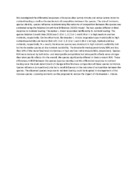| dc.description.abstract | We investigated the differential responses of invasive alien Lemna minuta and native Lemna minor to
nutrient loading as well as the mechanism of competition between the species. The role of nutrients,
species identity, species influence in determining the outcome of competition between the species was
estimated using the Relative Growth Rate Difference (RGRD) model. The two species differed in their
response to nutrient loading. The native L. minor responded indifferently to nutrient loading. The species
Relative Growth Rate (RGR) was 0.10 d−1, 0.11 d−1 and 0.09 d−1 in high,medium and low nutrients, respectively.
On the other hand, the invasive L. minuta responded opportunistically to high nutrient availability
and had an RGR of 0.13 d−1, 0.10 d−1 and 0.08 d−1 in high, medium and low nutrients, respectively. As
a result, the invasive species was dominant in high nutrient availability but lost to the native species
at low nutrient availability. The invader formed approximately 60% and less than 50% of the stand final
total dry biomass in high and low nutrient availability, respectively. Species RGR were reduced by both
intra- and interspecific competition but intraspecific effects were stronger than interspecific effects. On
the overall, the species significantly differed in their constant RGR. These differences in RGR between the
species (species identity) and the differential response to nutrient loading were the main determinant
of change in final biomass composition of these species in mixture. Species influence (competition) only
had a small influence on the outcome of competition between the species. The observed species response
to nutrient loading could be targeted in management of the invasive species. Lowering nutrients can be
proposed to reduce the impact of the invasive L. minuta. | en_US |
